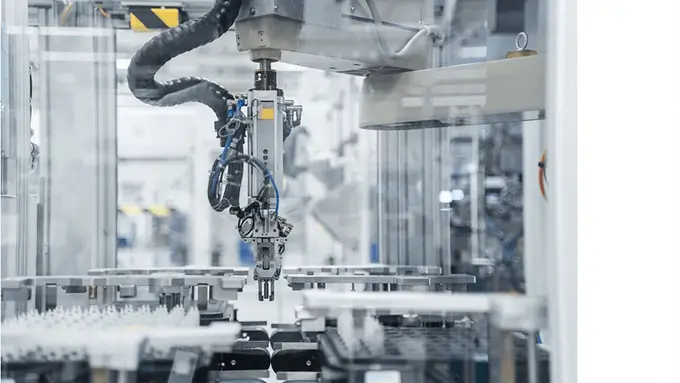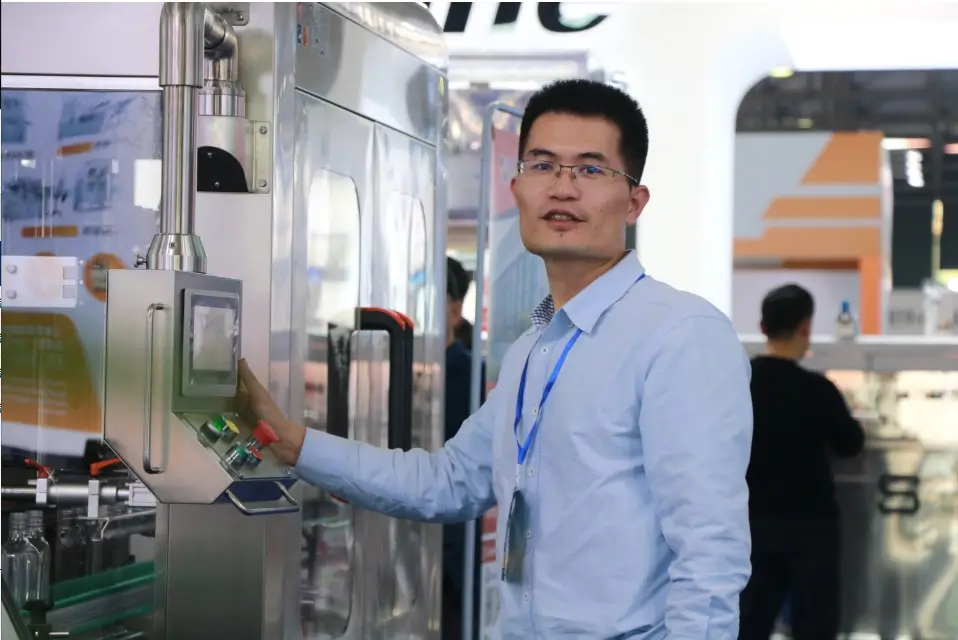NPACK, established in 2006 by Victor Liu, has developed significantly over the years, launching NPACK (CHINA) LTD in Hong Kong in 2011 and Shanghai Npack Automation Equipment Co., Ltd. in Shanghai in 2012. Our nearly two decades of specialization in the liquid filling machine sector have allowed us to witness and contribute to the technological advancements in this field within China.
Despite the challenges in finding comprehensive and official historical data on filling machines through conventional search engines, including Google, our investigation into AI resources, particularly CHATGPT, has provided us with more reliable and valuable information, though still limited.
Liquid Filling Machine Development Trend
Based on our extensive industry experience and technological expertise, we have identified several liquid filling machine development history and trends that npack predict will shape the future of filling machine since 2024
- Smart control system: Due to the new technology development ,the servo control system is developping more faster than past 10 years. An the Future Autmoatic filling machines are expected to be enhanced with advanced smart performance.
- Higher Automation Levels: Reach a fully automation, no human operation at site of the machine, all the control system will be in one place, the operator even can operation the machine in office computer , even one a smart phone.we think this will come in the next 10 years.
- Ease of Use and Operation: As technology progresses, the user interface of filling machines will become more intuitive and user-friendly. No special skills need to operation a filling machine.It will be easy same as using a mobile phone.
- Compact Design: future designs of the filling machine, will be compact, and saving space. and people can use a filling machine in a house to dosing liquid by themself. The population size is smalle than 2024, and people can make products at home for the easy products they like, such as make a juice filling, a sauce filling even a beer filling.Home made liquid will be popular, and people will like home made products, this will make the change of the filling machine to be smart and compact.
- Standardization: There will be a push towards standardization in machine design and operations. Before we think it is an unstandard and customized filling machine, but now a liquid filling machine almost can filling all types of liquid , and suits for different size of the bottles and containers.It will only have different capacity of liquid filling machine, but only model different.
- Unmanned Operations: Lastly, the trend towards unmanned operations will continue to evolve. Filling machines will operate with minimal to no human oversight, using camera and sensors, and robot to monitor everything, the only one operation in a workshop is a smart robot.
These trends reflect our commitment to innovation and our vision for the future of the liquid filling machine industry, aiming to deliver solutions that are not only technologically advanced but also practical and beneficial for users.The industry equipments will be change for the new technology and the population structure and size.When we come back to see the filling machine develop history, then we can see everything is possible.
Liquid Filling Machine history

Liquid filling machines are a critical component of industry manufacturing, especially in the food, beverage, pharmaceutical, and cosmetic industries. Here’s a short overview of the history and development of liquid filling machines,
At Early Beginnings
The history of liquid filling machines begins with manual way,and it is used for packaging liquids,not only for a product packagings.And it requires work labor-intensive and poor precision. The Industrial Revolution in the late 18th century sparked the need for more efficient manufacturing processes, including those for liquid filling.
19th Century Innovations
The first semi-automatic liquid filling machines were developed in the 19th century. These machines improved the efficiency of liquid filling but still required significant manual operation. They typically used piston and cylinder mechanisms, where the volume of the liquid dispensed was controlled by the stroke of the piston.
Early 20th Century
By the early 20th century, with the rise of mass production, there was a pressing need for more rapid and accurate filling techniques. The introduction of automatic liquid filling machines met this demand. These machines were capable of filling containers more quickly and with greater consistency than manual or semi-automatic methods.
Post World War II Developments
After World War II, technological advances led to the development of more sophisticated liquid filling machines. This period saw the introduction of electronic components and more refined mechanical designs, which allowed for better control over the filling process and adaptability to different types of liquids and container sizes.
Late 20th Century to Present
The late 20th century and early 21st century have seen significant advancements in liquid filling technology. Modern machines now incorporate computerized controls, programmable logic controllers (PLCs), and touch screen interfaces, making them more precise and easier to operate. Technologies such as flow meter filling, peristaltic pumps, and servo-driven systems have enhanced the versatility and efficiency of liquid filling machines.
Recent Innovations
Recent innovations include the integration of IoT (Internet of Things) capabilities, which allows for real-time monitoring and optimization of the filling process. Advanced sensors and data analytics are used to improve efficiency and reduce waste, ensuring consistent product quality and compliance with industry regulations.
Overall, the evolution of liquid filling machines reflects broader industrial trends towards automation, precision, and efficiency, driven by technological advancements and the increasing demands of global markets.
